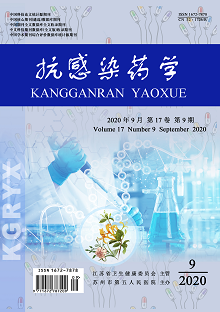YANG Lu-xuan, ZHU Yue-ping, SHEN Xiu-juan, ZHANG Wen-yong, QIAN Feng, LI Ming, ZHu Li, ZHU Chuan-wu
Objective: To analyze the early clinical data of patients diagnosed with COVID-19 in Suzhou area and its therapeutic countermeasures, and to provides reference for clinical judgement of the disease progression and early treatment. Methods: Clinical data were collected from 87 patients diagnosed with COVID-19 admitted from January 13 to March 1, 2020, the early clinical manifestations, laboratory indicators and treatment measures were analyzed. Results: Among the 87 patients with COVID-19, 50 (57.47%) and 37 (42.53%) had no history of travel in Hubei. There were 72 cases (82.76%) with fever, 54 cases (62.07%) with cough, 40 cases (45.98%) with fatigue, 30 cases (34.48%) with nasopharyngeal discomfort (including nasal congestion, runny nose, dry pharynx and sore throat) and 5 cases (5.75%) with dyspnea. There were 10 mild cases (11.49%), 66 ordinary cases (75.86%), 10 severe cases (11.47%) and 1 critical case (1.15%). The values of monocytes, CRP, glutamine transaminase and D-dimer were higher than those of lymphocytes and eosinophils (P<0.05). Conclusion: Patients with dyspnea and nasopharyngeal discomfort in the early stage of COVID-19, as well as patients with high expression levels of monocytes, CRP, ALT, D-dimer and low expression levels of lymphocyte, eosinophilic granulocyte and other indicators, were more likely to worsen their condition. Through the changes of the above indicators, early intervention, control of its inflammatory response, improved the prognosis, could reduce its mortality.
